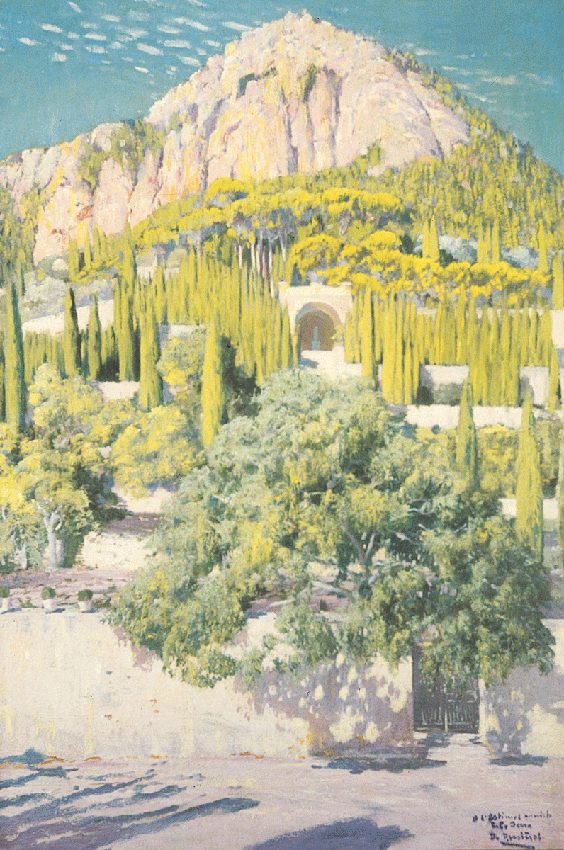Born into a family of textile manufacturers, Santiago Rusiñol was educated to carry on with the family business. But he rejected his family’s insistence, to devote himself in full to his vocation as a painter. His painting was no radical break, but rather he reconciled the rural naturalism of his youth with certain aspects of Impressionism – fleeting instantaneity, subtlety in the treatment of the atmosphere, influence of the Japanese print – along the same lines as other artists contemporary to him.
One of his most significant periods took place in Paris; he soon became one of the most-recognised figures and most-pronounced personalities of Modernism, contributing to the definition and development of this genre with his canvases, which suggest an intimate, highly personal universe, with incursions into several literary genres – notably his theatre work – and with his role as a promotor of the artistic scene through activities he organised in Sitges and in relation to the Els Quatre Gats café in Barcelona.
Rusiñol used painting and literature to project an introverted, melancholy personality, which is expressed in his painting and which he conceals under an appearance of frivolity and extroversion.
M.G.
